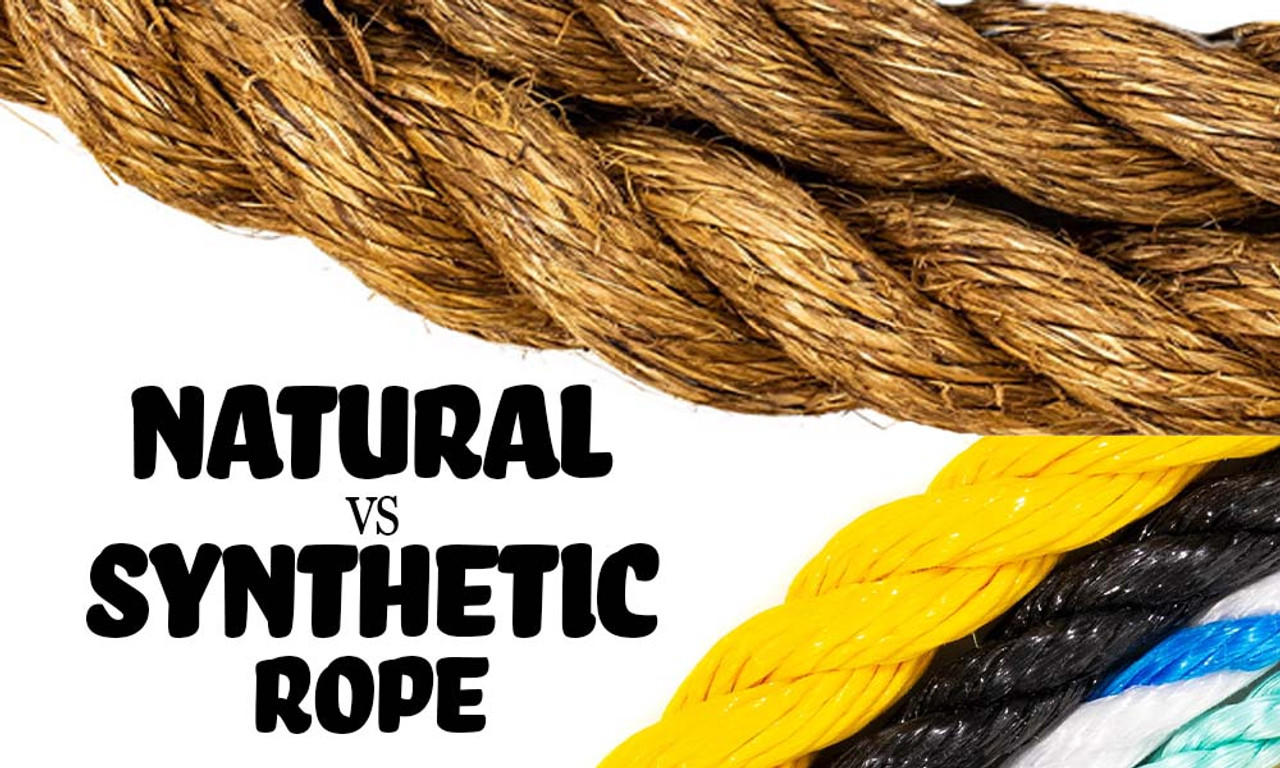Natural vs Synthetic Rope
Both natural and synthetic ropes are great, but each has attributes that make them better in different situations. Below are four different aspects of rope that are great for comparing what makes natural and synthetic rope great.
Composition
Natural ropes are made of material that is farmed or grown from the earth. Manila rope is made from the abaca plant, cotton rope is made from the cotton plant, and sisal rope is made from the leaves of the sisal plant.
Synthetic ropes are made from man-made chemicals and fibers. Materials commonly used include polypropylene, nylon, and polyester. All of these are a plastic-based material. Rope can either be made of just one or a combination of these materials.
Strength
Natural ropes are weaker than synthetic ropes due to their natural composition not being able to be altered. Natural ropes are still relatively strong though. For example, the smallest diameter of manila rope has a minimum break strength of 540 lbs. and the largest diameter of manila rope has a minimum break strength of 27,900 lbs.
Synthetic ropes tend to be stronger than natural ropes by nearly 20 percent. This is due to many factors, but mostly because synthetic ropes were specifically designed to be stronger than any natural rope that was already being used at the time. For example, the smallest diameter of unmanila rope has a minimum break strength of 1,250 lbs. and the largest diameter of unmanila rope has a minimum break strength of 46,800 lbs. With synthetic ropes being stronger, they are also considered to be more durable overall.
Durability
Natural ropes are great in high temperature environments and will not become damaged from heat unless directly exposed to fire. Natural ropes are not great in high-moisture environments, as they can easily rot and lose a lot of their strength and ability to function properly.
Synthetic ropes are great for wet environments and are resistant to rot, mold, and mildew, making them a great option for using along the coastal areas and on boats and water. They are also more resistant to abrasion and can withstand higher and more frequent amounts of friction.
Uses
Natural ropes are commonly used for landscaping and in gardens because of their organic makeup. They are also used for pet toys and other pet items like cat scratching poles. Specifically, cotton rope is the most popular material used for dog chew toys. If small particles are swallowed, they are easily digested without harm.
Synthetic ropes have a very wide variety of uses because of their durability and strength capabilities. They can be used indoors or outdoors in all weather conditions. Some examples of uses include swimming pool lanes, water sports, fishing, party tent lines, outdoor railings, and decor.
What kind of rope do you prefer to use? Natural or synthetic, for what purposes, and why? Comment below!

